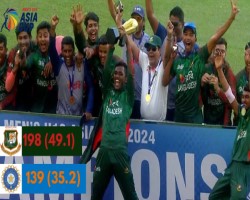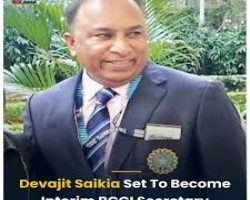SSC Current Affairs
TABLE OF CONTENTS |
||||||||||||||||||||||||
| Polity and Governance | ||||||||||||||||||||||||
|---|---|---|---|---|---|---|---|---|---|---|---|---|---|---|---|---|---|---|---|---|---|---|---|---|
|
|
||||||||||||||||||||||||
|
Why in the news?
The uneasy relationship that Opposition parties share with Rajya Sabha Chairman and Vice-President Jagdeep Dhankhar is set to come to a head as the INDIA bloc parties have decided to submit a notice to move a no-confidence or impeachment resolution against him. The Opposition parties do not have the numbers in the House to ensure Dhankhar’s impeachment as Vice-President but are contemplating the move “very soon” as a political signal. Key Takeaways: According to 67(b), “a Vice-President may be removed from his office by a resolution of the Council of States passed by the majority of all the then members of the Council and agreed to by the House of the People; but no resolution for the purpose of this clause shall be moved unless at least fourteen days’ notice has been given of the intention to move the resolution.” No precedent: While there is no precedence of a no-confidence or impeachment resolution being moved against the Rajya Sabha Chairman, the Opposition in 2020 submitted a no-confidence resolution against Rajya Sabha Deputy Chairman Harivansh. The move followed an uproar in the House over his decision to extend the Session beyond the scheduled 1 pm, overruling Opposition pleas to continue discussions on the contentious farm Bills the next day. Article 90 of the Constitution deals with the “Vacation and resignation of, and removal from, the office of Deputy Chairman”. The precedents cited from the book by the Opposition included resolutions moved against the first Lok Sabha Speaker, G V Mavalankar, in 1951, Speaker Sardar Hukam Singh in 1966, and Speaker Balram Jakhar in 1987. The resolution against Mavalankar came up for discussion and was negated by the House. The other two resolutions were also discussed and negated by the House. Vice President in India: The Vice President of India is the second-highest constitutional office in the country after the President of India. The Vice-President is accorded a rank next to the President in the official warrant of precedence. This office is modeled on the lines of the American Vice-President. The Vice President's main role is to act as the President if the President cannot perform his or her duties, such as due to death, resignation, or impeachment. The Vice President also serves as the Chairman of the Rajya Sabha (Council of States), the upper house of the Indian Parliament. How is the Vice President of India elected? The Vice-President, like the president, is elected not directly by the people but indirectly. He is elected by the members of an electoral college consisting of the members of both houses of Parliament. Thus, this electoral college is different from the electoral college for the election of the President in the following two respects: It consists of both elected and nominated members of the Parliament (in the case of the President, only elected members). It does not include the members of the state legislative assemblies (in the case of the President, the elected members of the state legislative assemblies are included). Vice-President’s election, like that of the President’s election, is held in accordance with the system of proportional representation by means of the single transferable vote, and the voting is by secret ballot. All doubts and disputes concerning the election of the Vice-President are inquired into and decided by the Supreme Court, whose decision is final. Vice President of India Constitutional Provisions:
To be eligible for election as Vice-President, a person should fulfill the following qualifications: He should be a citizen of India. He should have completed 35 years of age. He should be qualified for election as a member of the Rajya Sabha. He should not hold any office of profit under the Union government or any state government or any local authority, or any other public authority. Conditions of Office: The Constitution lays down the following two conditions of the Vice-President’s office: He should not be a member of either House of Parliament or a House of the state legislature. If any such person is elected Vice-President, he is deemed to have vacated his seat in that House on the date on which he enters upon his office as Vice-President. He should not hold any other office of profit. Term and Vacancy: Term: The Vice-President holds office for a term of five years from the date on which he enters his office. However, he can resign from his office anytime by addressing the resignation letter to the President. The Vice-President can hold office beyond his term of five years until his successor assumes charge. He is also eligible for reelection to that office. He may be elected for any number of terms. Vacancy: A vacancy in the Vice-President’s office can occur in any of the following ways: On the expiry of his tenure of five years By his resignation On his removal By his death Otherwise, for example, when he becomes disqualified to hold office or when his election is declared void. If the office falls vacant by resignation, removal, death, or otherwise, then an election to fill the vacancy should be held as soon as possible(within six months for President) after the occurrence of the vacancy. What is the procedure for the removal of the Vice President of India? The Vice President can also be removed from office before the completion of his term. A formal impeachment is not required for his removal. He can be removed by a resolution passed by a majority of all the then members of the Rajya Sabha (Effective Majority) and agreed to by the Lok Sabha (Simple Majority). This means that this resolution should be passed in the Rajya Sabha by an effective majority and in the Lok Sabha by a simple majority. It must be noted here that the effective majority in India is only a type of special majority and not a separate one. Further, this resolution can be introduced only in the Rajya Sabha and not in the Lok Sabha. But, no such resolution can be moved unless at least 14 days advance notice has been given. How can the office of the Vice President of India be compared to that of the Vice President of the USA?
The powers and functions of the Vice-President include He is the ex-officioChairman of Rajya Sabha. In this capacity, his powers and functions are similar to those of the Speaker of Lok Sabha. In this respect, he resembles the American vice president, who also acts as the Chairman of the Senate–the Upper House of the American legislature. He acts as President when a vacancy occurs in the office of the President due to his resignation, impeachment, death, or otherwise. He can act as President only for a maximum period of six months, within which a new President has to be elected. Further, when the sitting President cannot discharge his functions due to absence, illness, or any other cause, the Vice-President discharges his functions until the President resumes his office. While acting as President or discharging the functions of the President, the Vice-President does not perform the duties of the office of the chairman of Rajya Sabha. During this period, those duties are performed by the Deputy Chairman of the Rajya Sabha. Vice President of India Significance: The Vice President of India serves as the ex-officio Chairman of the Rajya Sabha, the upper house of the Indian Parliament. As Chairman, the Vice President presides over the sessions of the Rajya Sabha, maintains order and decorum in the chamber, and ensures that the rules and procedures of the house are followed. Though he is not a member of the house, the Vice President can vote in the Rajya Sabha in the case of a tie. The Vice President also appoints the Chairman and members of the Rajya Sabha's various committees. Consideration of motion of removing supreme court or high court judge depends upon the chairman of Rajya Sabha. |
||||||||||||||||||||||||
|
|
||||||||||||||||||||||||
|
Previous Year Questions (PYQs):
Q) Consider the following statements: (2013) 1. The Chairman and the Deputy Chairman of the Rajya Sabha are not the members of that House. 2. While the nominated members of the two Houses of the Parliament have no voting right in the presidential election, they have the right to vote in the election of the Vice President. Which of the statements given above is/are correct? (a) 1 only (b) 2 only (c) Both 1 and 2 (d) Neither 1 nor 2 Ans: b Vice President of India Frequently Asked Questions (FAQs): Q1. Which Vice Presidents later became President in india? Ans: Dr S Radhakrishnan, Dr Zakir Hussain, V V Giri, R Venkataraman, Dr Shankar Dayal Sharma, K R Narayanan are the persons who were first elected as Vice-President and later became the country's President. Dr S Radhakrishnan,Dr Zakir Hussain, V V Giri, R Venkataraman, Dr Shankar Dayal Sharma, K R Narayanan. Q2. Who presides over the sessions of Rajya Sabha in the absence of the Vice President? Ans: The Deputy Chairman, who is elected from amongst the house's members, takes care of the day-to-day matters of the house in the absence of the Chairman. Chairman nominates the panel of chairpersons who preside in the absence of Chairman and Deputy Chairman of Rajya Sabha. |
||||||||||||||||||||||||
| International Relations | ||||||||||||||||||||||||
|
|
||||||||||||||||||||||||
|
Polarization means?
"Polarization means division, but it's a very specific kind of division," said Peter Sokolowski, Merriam-Webster's editor at large, in an exclusive interview with The Associated Press. "Polarization means that we are tending toward the extremes rather than toward the center." Key Takeaways: The Merriam-Webster entry for "polarization" reflects scientific and metaphorical definitions. It's most commonly used to mean "causing strong disagreement between opposing factions or groupings." Merriam-Webster, which logs 100 million pageviews a month on its site, chooses its word of the year based on data, tracking a rise in search and usage. Last year's pick was "authentic." This year's comes as large swaths of the U.S. struggle to reach consensus on what is real. Democracy In 2003, Merriam-Webster decided to make "democracy" its first word of the year. History of polarization: It's notable that "polarization" originated in the early 1800s - and not during the Renaissance, as did most words with Latin roots about science, Sokolowski said. He called it a "pretty young word," in the scheme of the English language. "Polarized is a term that brings intensity to another word," he continued, most frequently used in the U.S. to describe race relations, politics and ideology. |
||||||||||||||||||||||||
|
|
||||||||||||||||||||||||
|
IN SHORT:
Merriam-Webster declares word of the year: 'Polarization' It's most commonly used to mean "causing strong disagreement between opposing factions or groupings." |
||||||||||||||||||||||||
| Sports | ||||||||||||||||||||||||
|
|
||||||||||||||||||||||||
|
Why in the news?
Nine-year-old Delhi boy Aarit Kapil has become the youngest Indian to beat a chess Grandmaster as he emerged victorious against Raset Ziatdinov of United States in the ninth and penultimate round of the KIIT International open tournament here. Key Takeaways: 📍At 9 years, 2 months and 18 days, Aarit is the youngest Indian and third in the world to beat a GM under the classical time control. 📍The youngest player in the world to beat a GM is Indian-origin Singapore boy Ashwath Kaushik who won against Jacek Stupa of Poland when he was just 8 years and six months old earlier this year. 📍In a thrilling encounter during the ninth round of the KIIT International Open Tournament, Aarit emerged victorious against Raset Ziatdinov, a 66-year-old Grandmaster from the United States. The top three youngest players to beat a Grandmaster: 1. Ashwath Kaushik (Singapore) – 8 years 2 months 2. Leonid Ivanovic (Serbia) – 8 years 11 months 3. Aarit Kapil – 9 years 2 months. |
||||||||||||||||||||||||
|
|
||||||||||||||||||||||||
|
Why in the news?
Defending champion Bangladesh defeated India by 59 runs in the final of the ACC U19 Men’s Asia Cup Final in Dubai. Key Takeaways: 📍Chasing a target of 199, Mohamed Amman-led India was dismissed for 139 with more than 14 overs to spare. 📍Amaan (26), Hardik Raj (24), KP Karthikeya (21) and C Andre Siddarth (20) were the only Indian batters who got starts but ultimately failed to build on them. No other batter got past the double-digit mark. 📍For Bangladesh, Iqbal Hossain Emon and Azizul Hakim took three wickets each. 📍After being asked to bat first, Bangladesh posted 198 on the scoreboard courtesy of important contributions from Mohammad Shihab James (40), Rizan Hossan (47) and Farid Hasan (39). 📍The pace duo of Yudhajit Guha and Chetan Sharma, and spinner Hardik picked two wickets each. |
||||||||||||||||||||||||
|
|
||||||||||||||||||||||||
|
Why in the news?
ABU DHABI, United Arab Emirates -- Lando Norris ended McLaren's 26-year wait for the Formula 1 constructors' title as he won the season-ending Abu Dhabi Grand Prix. Key Takeaways: Lando Norris delivered an exceptional performance at the Abu Dhabi Grand Prix, claiming victory in a race marked by incidents, penalties, and emotional moments. His triumph ended McLaren’s 26-year wait for a constructors’ championship, a feat last achieved in 1998. The win also overshadowed a challenging race for other drivers, including Max Verstappen and Lewis Hamilton, who finished fourth in his final race for Mercedes. Carlos Sainz & Charles Leclerc: Secured second and third for Ferrari. Leclerc started 19th and climbed to third in a remarkable drive. Lewis Hamilton: Seven-time champion Lewis Hamilton was fourth in his 246th and last race for Mercedes before joining Ferrari next year after overtaking teammate George Russell on the last lap. Started 16th on hard tires and executed a strong comeback. Max Verstappen: Finished sixth after penalties and sarcastic complaints over the radio. Criticized by Piastri for his aggressive move. |
||||||||||||||||||||||||
|
|
||||||||||||||||||||||||
|
Why in the news?
Devajit Saikia has been appointed as the BCCI's acting secretary by Board President Roger Binny, replacing Jay Shah who recently took over as the new ICC President. Key Takeaways: Saikia, who hails from Assam, is a former first-class cricketer. He is currently the BCCI joint secretary. Binny used his constitutional powers to appoint Saikia as acting secretary in a stop-gap arrangement till a permanent secretary is appointed under BCCI rules and regulations. In a letter addressed to Saikia, which is in possession of PTI, Binny cited clause 7(1) (d) of the BCCI constitution to hand secretarial powers to the Assam official, who is also the Advocate General of the state. |
||||||||||||||||||||||||
| Appointments and Resigns | ||||||||||||||||||||||||
|
|
||||||||||||||||||||||||
|
Why in the news?
Sanjay Malhotra, a 1990-batch Indian Administrative Service officer, currently Revenue Secretary in the Ministry of Finance, has been appointed as the next Governor of the Reserve Bank of India (RBI). Succeeding Shaktikanta Das. Key Takeaways: 📍The Appointments Committee of the Cabinet on Monday gave its nod for the selection of the 56-year-old Malhotra as the 26th RBI Governor with effect from December 11 for a period of three years. 📍The six-year term of current RBI Governor Shaktikanta Das is slated to end on December 10. 📍Malhotra faces challenges like balancing inflation control with economic growth and managing the rupee’s depreciation amid global dollar strength. 📍His tenure starts on December 11, 2024, for three years. A former Secretary in the Department of Financial Services, Malhotra is credited for steering LIC’s record ₹21,000 crore IPO and advancing public sector banking reforms. 📍Known as a “pro-reformist,” he combines technical expertise from IIT Kanpur and Princeton University with a deep understanding of fiscal and monetary policies. About Sanjay Malhotra: Malhotra, a 1990-batch Indian Administrative Service (IAS) officer of Rajasthan cadre, is an IIT Kanpur alumnus. Prior to assuming the charge of revenue secretary, he was the financial services secretary in the department of financial services (DFS). The government on October 19, 2022 appointed him as the officer on special duty (OSD) in the revenue department to take over the position from incumbent Tarun Bajaj who was scheduled to retire on November 30. Malhotra took over as revenue secretary on December 1, 2022. , with a long tenure in hand (up to February 29, 2028). Prior to joining DFS – an arm of the Union finance ministry -- on February 8, 2022, Malhotra was chairman and managing director of REC Ltd. He is an engineering graduate in computer science from IIT, Kanpur and has a master’s degree in public policy from Princeton University, according to the Reserve Bank of India’s website. Malhotra was one of the directors in RBI’s Central Board as DFS secretary. How is the RBI Governor appointed? The governor is appointed as the the RBI Act, 1934. The law states that the chief is appointed by the Central government. The Financial Sector Regulatory Appointment Search Committee, consisting Cabinet Secretary, current RBI Governor, Financial Services Secretary and two independent members, prepares a list of people eligible to hold the post. Next, the shortlisted candidates are interviewed and sent to the Cabinet Committee on Appointments, which is headed by the Prime Minister. The committee selects the governor through confirmation of the appointment. The The governor holds office for periods not exceeding five years. The term of the governor may be fixed by the government at the time of his appointment. The central bank chief is is eligible for reappointment or extension. RBI Governor qualifications: The RBI Act, 1934 does not mention any specific qualification for the governor. People with different educational backgrounds were selected to head the institution. However, the governor traditionally is either a civil services personnel or an economists. |
||||||||||||||||||||||||
|
|
||||||||||||||||||||||||
|
IN SHORT:
The Appointments Committee of the Cabinet on Monday gave its nod for the selection of the 56-year-old Sanjay Malhotra as the 26th RBI Governor with effect from December 11 for a period of three years. The six-year term of current RBI Governor Shaktikanta Das is slated to end on December 10. |
||||||||||||||||||||||||
|
|
||||||||||||||||||||||||
|
Useful information for all competitive exams:
Reserve Bank of India: Headquarters: Mumbai, Maharashtra Established: 1 April 1935 Inaugural holder: Sir Osborne Smith Governor (26th): Sanjay Malhotra Deputy Governors: M. Rajeshwar Rao, Swaminathan J, T. Rabi Sankar, Dr. M.D. Patra Sir C. D. Deshmukh(3rd): He was the first Indian to serve as the governor. List of Governors: 1. Sir Osborne Smith 2. Sir James Taylor 3. Sir C D Deshmukh 4. Sir Benegal Rama Rau 5. K G Ambegaonkar 6. H V R Iengar 7. P C Bhattacharya 8. L K Jha 9. B N Adarkar 10. S Jagannathan 11. N C Sen Gupta 12. K R Puri 13. M Narasimham 14. Dr. I G Patel 15. Dr. Manmohan Singh 16. A Ghosh 17. R N Malhotra 18. S Venkitaramanan 19. Dr. C Rangarajan 20. Dr. Bimal Jalan 21. Dr. Y V Reddy 22. D. Subbarao 23. Raghuram Rajan 24. Urjit Patel 25. Shaktikanta Das 26. Sanjay Malhotra |
||||||||||||||||||||||||
| Important Days | ||||||||||||||||||||||||
|
|
||||||||||||||||||||||||
|
Why in the news?
World Human Rights Day is observed every year on December 10. Why we observe World Human Rights Day? It is a testament to the universal commitment to equality, freedom, and human dignity. Human rights play a vital role as a preventative, protective and transformative force for good. This day also empowers people and communities across the world to build a better future. World Human Rights Day 2024: History World Human Rights Day was established in 1948 when the United Nations General Assembly adopted the Universal Declaration of Human Rights (UDHR). It is the first global enunciation of human rights. This landmark document outlined the fundamental rights that every individual is entitled to, regardless of race, religion, gender, or nationality. Human Rights Day was formally adopted at the 317th Plenary Meeting of the General Assembly on 4 December 1950, when the General Assembly declared resolution 423 (V). It invited all the member states and any other interested organisations to celebrate the day as they saw fit. The Human Rights Day is celebrated to honour this monumental achievement and to remind the world of its collective responsibility to uphold these principles. World Human Rights Day 2024: Significance World Human Rights Day emphasises the importance of protecting and promoting human rights across the world. It serves as a reminder of the ongoing fight against discrimination, oppression, and inequality. The day also acknowledges the contributions of activists, organizations, and governments working tirelessly to safeguard these rights. The Universal Declaration of Human Rights sets out a broad range of fundamental rights and freedoms to which all people are entitled. World Human Rights Day guarantees the rights of every individual everywhere, without distinction based on nationality, place of residence, gender, national or ethnic origin, religion, language, or any other status. In 2024, with the rise of conflicts, social inequalities, and environmental crises across the world, the need to reaffirm the universality of human rights has become very critical. This day encourages individuals and nations alike to advocate for a world where justice and equality prevail. World Human Rights Day 2024: Theme The theme for World Human Rights Day 2024 is “Our rights, our future, right now.” |
||||||||||||||||||||||||
|
|
||||||||||||||||||||||||
|
IN SHORT:
World Human Rights Day is observed every year on December 10. The theme for World Human Rights Day 2024 is “Our rights, our future, right now.” |
||||||||||||||||||||||||
Current-Affairs Video : 10-Dec-24 |
||||||||||||||||||||||||
|
|
||||||||||||||||||||||||
|
<< 9-Dec-24
|
||||||||||||||||||||||||
|
|







